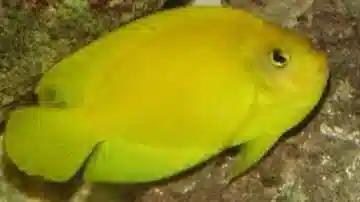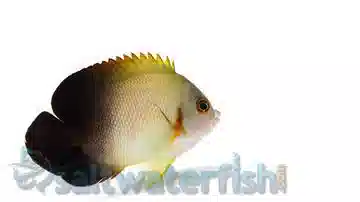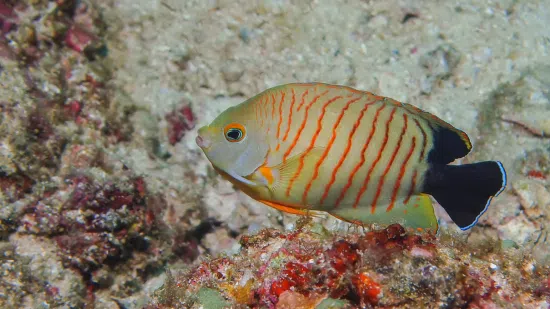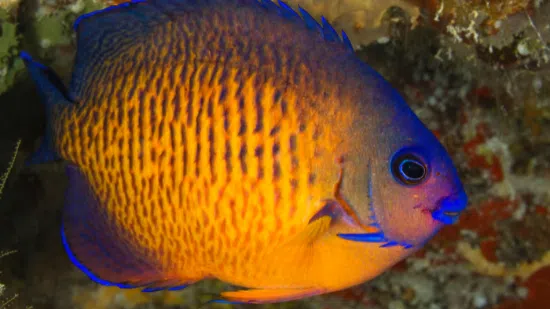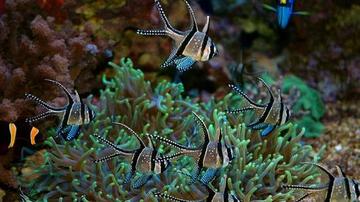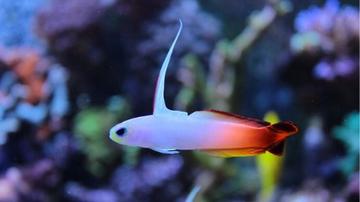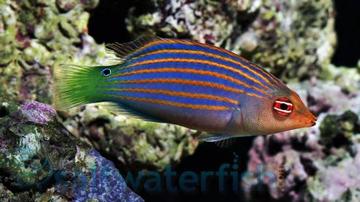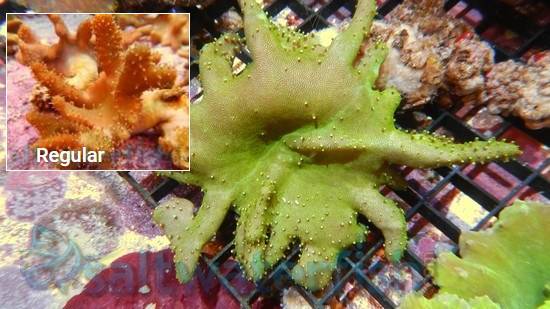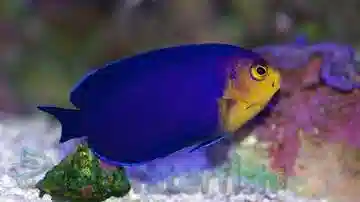Pygmy Angelfish
Centropyge argi
(12 Reviews)
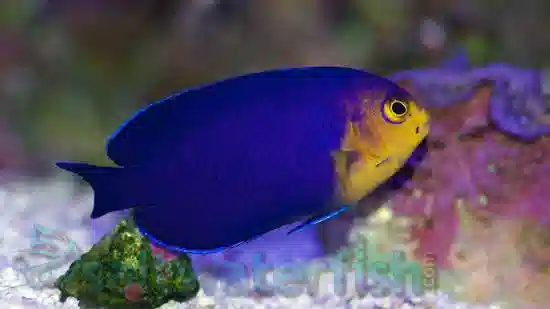
Pygmy Angelfish
Centropyge argi
(12 Reviews)
{{ item.name }}
Size: {{ item.extra_field_3 }}
${{ getFormattedPrice(item.saleprice) }} ${{ getFormattedPrice(item.price) }}
To join the waiting list, click here
Free Shipping
With
$199.00
or more in Marine Life.
More details...
Pygmy Angelfish Care Facts
| Care Level: | Easy |
|---|---|
| Temperament: | Semi-Aggressive |
| Diet: | Omnivore |
| Reef Safe: | Yes -With Caution |
| Minimum Tank Size: | 55 gallons |
| Max Size: | 3 inches |
Pygmy (Cherub) Angelfish (Centropyge argi): The Miniature Marvel of Your Marine Aquarium
Discover the world of the Pygmy Angelfish, scientifically known as Centropyge argi, and bring a touch of marine elegance to your saltwater aquarium. In this comprehensive guide, we will delve into every facet of this exquisite species, from its natural habitat and reef compatibility to its size, lifespan, diet in captivity, availability through aquaculture, compatibility with fellow marine inhabitants, sexual dimorphism, juvenile to adult coloration changes, temperament, precise tank requirements, and detailed water conditions. We will also list common names, suggest five compatible tankmates, and explain why acquiring the Pygmy Angelfish from Saltwaterfish.com is a wise choice for your marine setup.
Habitat and Natural Range of the Pygmy Angelfish
The Pygmy Angelfish, Centropyge argi, inhabits the warm, tropical waters of the Western Atlantic Ocean, specifically the Caribbean Sea and the Gulf of Mexico. Within this region, it is commonly found near coral reefs, rocky outcrops, and the sheltered recesses of reef structures. Its vibrant presence adds splendor to these underwater environments.
Reef Compatibility of the Pygmy Angelfish
One key attribute that makes the Pygmy Angelfish highly desirable for marine aquariums is its excellent reef compatibility. It harmoniously coexists with a wide range of coral species and other invertebrates, making it an ideal addition to a thriving reef setup. It is reef-safe with some caution. Specimens might nip on coral polyps.
Size and Lifespan of the Pygmy Angelfish
In captivity, the Pygmy Angelfish generally reaches a size of 3 inches (7.5 cm). With proper care, it can enjoy a lifespan of up to 15 years, providing a long-term commitment to marine enthusiasts who appreciate its unique charm.
What the Pigmy Angelfish Eats in Captivity
The diet of Pygmy Angelfish in captivity consists of a balanced mix of marine-based foods. To replicate their natural diet, offer a variety of high-quality marine flakes, pellets, and frozen or live foods. Their dietary preferences include algae, small crustaceans, and zooplankton. A diverse diet ensures they receive essential nutrients, promotes vibrant coloration, and supports overall well-being.
Aquaculture and Availability of the Pygmy Angelfish
Pygmy Angelfish are occasionally available through aquaculture, offering hobbyists a sustainable and responsible choice. These aquacultured specimens are raised in controlled environments, which enhances their hardiness and resistance to diseases compared to their wild-caught counterparts. If wild-caught specimens are selected, use a company using responsible collection methods like Saltwaterfish.com.
The Compatibility of the Pygmy Angelfish with Other Fish and Invertebrates
The Pygmy Angelfish is renowned for its peaceful temperament, making it an excellent choice for community aquariums. It coexists amicably with various tankmates, creating a tranquil and visually captivating aquarium environment. Here are five compatible tankmates:
- Firefish (Nemateleotris spp.): Firefish share the Pygmy Angelfish's peaceful nature, and their vibrant colors add visual appeal to your tank.
- Royal Gramma (Gramma loreto): Known for their striking coloration, Royal Grammas complement the Pygmy Angelfish's elegance.
- Yellow Clown Goby (Gobiodon okinawae): These tiny gobies are peaceful and feature vivid yellow coloration.
- Cleaner Shrimp (Lysmata spp.): Cleaner shrimp establish symbiotic relationships with other fish and are a functional and fascinating addition to your aquarium.
- Coral Beauty Angelfish (Centropyge bispinosa): Pygmy Angelfish and Coral Beauty Angelfish coexist harmoniously, adding beauty and diversity to your tank.
Sexual Dimorphism of the Pygmy Angelfish
Pygmy Angelfish exhibit minimal sexual dimorphism, making it challenging to distinguish between males and females visually. In the aquarium trade, both sexes are typically represented simply as "Pygmy Angelfish."
Juvenile to Adult Coloration Changes
Juvenile Pygmy Angelfish displays a striking blue body with a distinctive yellow tail. As they transition into adulthood, their coloration may shift, with some individuals developing more intense blue hues and others retaining their juvenile appearance. This variability adds to their charm and individuality.
Temperament of the Pygmy Angelfish
The Pygmy Angelfish is celebrated for its gentle and peaceful temperament. It typically does not engage in aggressive behavior or territorial disputes, contributing to a harmonious and enjoyable aquarium environment.
Tank Requirements for the Pygmy Angelfish
Creating an ideal environment is essential for the well-being of your Pygmy Angelfish. Here are crucial tank requirements to consider:
- Minimum Aquarium Size: A tank with a capacity of 55 gallons or more is recommended to provide ample swimming space and accommodate their graceful movements.
Ideal Water Conditions of for the Pygmy Angelfish
- pH: Maintain a stable pH between 8.1 and 8.4 to support metabolic functions and overall well-being.
- Salinity: Ensure a stable salinity level within the range of 1.020 to 1.025, replicating the conditions of their native habitat.
- Water Temperature: Maintain a consistent water temperature between 74°F and 78°F (23°C to 26°C) to promote comfort and reduce stress.
- Water Flow: Provide moderate water flow to mimic their natural environment and support water quality.
Other Common Names of the Pygmy Angelfish
In addition to being known as the Pygmy Angelfish, Centropyge argi may also be referred to by the common names:
- Cherub Angelfish
- Atlantic Pygmy Angelfish
Why People Should Buy the Pygmy Angelfish from Saltwaterfish.com
Choosing Saltwaterfish.com as your source for the Pygmy Angelfish guarantees you a reputable and responsible provider committed to the well-being of marine species. Our specimens undergo rigorous sourcing, quarantine, and acclimation processes to ensure their health and adaptability. By selecting the Pygmy Angelfish from Saltwaterfish.com, you enhance the beauty and dynamics of your aquarium and contribute to the health and sustainability of this captivating species. This unique fish adds elegance and grace to your tank, making it an informed and rewarding choice for any marine enthusiast.
In conclusion, the Pygmy Angelfish, with its delicate beauty and peaceful demeanor, is a superb addition to saltwater aquariums. Adhering to its specific care requirements and providing suitable tankmates allows you to enjoy the benefits of a captivating and serene aquarium. Opt for the Pygmy Angelfish from Saltwaterfish.com to acquire a healthy specimen that will thrive and enhance your saltwater aquarium for years.
Thank you good addition
Reviewed by: Bnb on April 6, 2021
Very lovely. I thought he and the damsels were fighting, but it looks like they will seek him out and he will seek them. They seem to play in a way the damsels never did with each other. He stays closer to the bottom and doesn't come up to compete for food. I didn't think he was eating but then I realized my cheto was all but gone. Hungry as a herbivore.
Reviewed by: Timothy Ollom on March 14, 2015
I've had him for about a week and he's doing great. For the first few days I didn't see him at all, but now he makes appearances pecking at algae and darting in and out of the rocks and caves. Nice colors and appears healthy.
Reviewed by: Jason on Feb. 14, 2015
A cute, little, lively fish that brings a lot of character to your tank. Seems to play well with others and makes a welcome addition while being an easy keeper.
Reviewed by: Melinda Johnston on Jan. 27, 2015
I bought this little guy here and to show you how hardy this guy is, he was the most active of 5 fish I had delivered when outside temp in MN was 21 degree out and bag water was at 68 degrees. All survived after 2 1/2 hr slow drip acclimation. He is a colorful little guy to watch darting around the tank. He is constantly on the move searching for food or detritus on the bottom as well as on reef rock. Likes to dart in and out of rock. He is getting much better at snagging Mysis shrimp I drop in before the other 6 fish hog it all, especially my Hamlet Indigo who gobbles everything that moves. A joy to watch.
Reviewed by: Phil on Jan. 7, 2015
An awesome little beautiful fish who peacefully explores my large reef tank's caves. Almost always visible and active.
Reviewed by: Rick on Dec. 23, 2014
This is a great little fish who showed up healthy and happy. He was shy at first in my quarantine tank but after moving him over to the main tank he has been quite the showman. Beautiful fish to add to a reef tank.
Reviewed by: Jim M. on Dec. 12, 2014
Very nice reef fish. Cleans detritus in the live rock. Doesn't intrude on the reef. Easy keeper.
Reviewed by: Lia Debettencourt on Nov. 27, 2014
Reviewed by: Wendi Barnts on Oct. 30, 2014
Reviewed by: Mary Stone on Oct. 7, 2014
Reviewed by: Jules on Sept. 29, 2014
Love this little guy! He is so beautiful and such an interesting personality! He doesn't bother anyone and has actually become friends with our yellow wrasse! They swim attached at the hip looking for food! He is a very mellow swimmer who loves swimming through the rock work to find new caves. He is a little hard to feed when competing with quicker eaters, I let a couple pellets sink in front of him and sink a few spirulina flakes)! I highly recommend him, he is sweet, beautiful, and easy!
Reviewed by: Caitlin on Aug. 21, 2013


